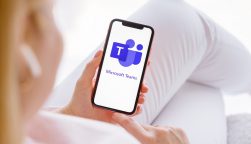Google has launched an updated version of its Find My Device network for Android, which alerts users to the location of their misplaced devices. It’s an answer to Android rival Apple’s “Find My Network” system for iOS, and opens up a new world of connected devices that can potentially save you a lot of time and pain when trying to locate a lost device.
Granteed, the network may open up the company to the same legal troubles that Apple has faced: The tech company is still in the process of addressing legal claims that it was negligent in preventing the use of Airtags for stalking.
Here’s how it works and what new Android functions you should know about.
5 Ways to Use Android’s Find My Device
Like Apple’s similar network, Android’s Find My Device network relies on data crowdsourced from over a billion Android devices worldwide.
It’s already rolling out to devices across the world as of today, with in the U.S. and Canada first in line. you’ll be able to use it for five different benefits:
 This just in! View
This just in! View
the top business tech deals for 2025 👨💻
1: Find Android devices even when offline
With Find My Device, you’ll be able to call up or view the exact location of your phone or tablet. This works even if the devices are offline, or, in the case of the Pixel 8 and Pixel 8 Pro, even when the power is off or the battery has died.

The Find my device app on Android. Image source: Google
2: Track other items with Bluetooth tags
Taking yet another page from the Apple playbook, the new device-location network functions with tags as well as actual devices.
Third-party tracker tag services Chipolo and Pebblebee will start offering custom-built Find My Device-capatible tags, as of May 2024. More providers are coming soon after: Google lists “eufy, Jio, Motorola and more.”
3: The “Find nearby” button
Most of the time, a lost phone isn’t a big deal: You can probably guess which room you left it in, you just don’t know if it’s behind the couch or under a book. If that’s the case, just hit the new “Find nearby” button within your app, and you’ll be prompted with an audio alert that will help you find your device (or tag, once they launch in May).
4: Use your Nest device to locate something in your home
Those with a Google Nest smarthome device can use the same app to ping their lost device or tag off of the Nest device, giving them a reference point to use when approximating where the device has wandered off to.
5: Share tag locations with friends or family
Finally, you can also add more people to help you find something by sharing specific accessories with friends or family who can help look for them if lost.
Google’s announcement post has some examples: “For instance, share your house key with your roommate, the TV remote with your friend or luggage with a travel buddy so you can easily divide and conquer if something goes missing.”
Locating Your Android Device Just Got a Lot Easier
In short, the biggest benefits and abilities are just what you’d expect: You can now retain visibility on your lost device, no matter where you lose it — even on your next globe-trotting workaction. You’ll soon be able to do the same with tags as well.
The “find nearby” button and the ability to location-share with friends are a couple smart tools that will likely prove helpful for many.




